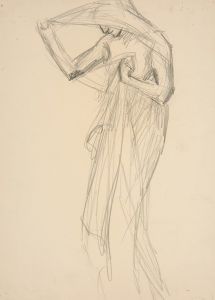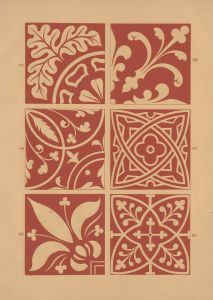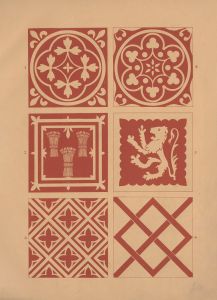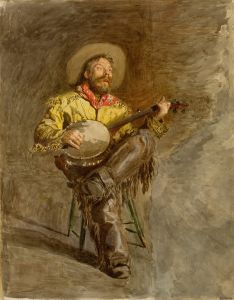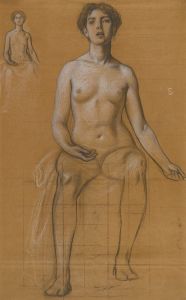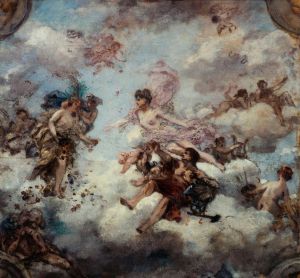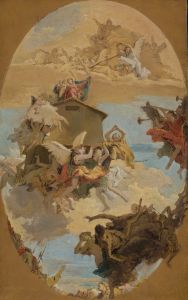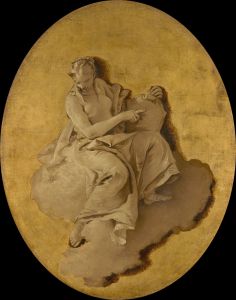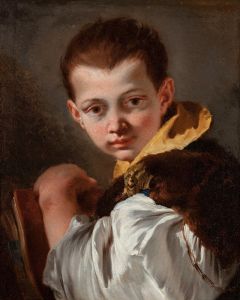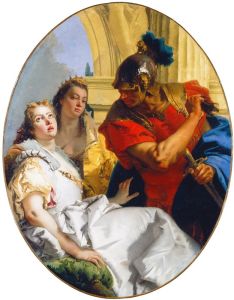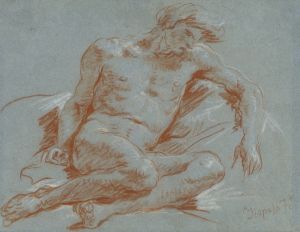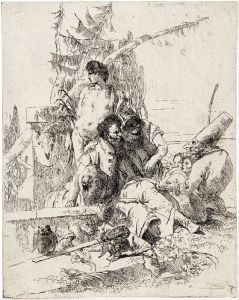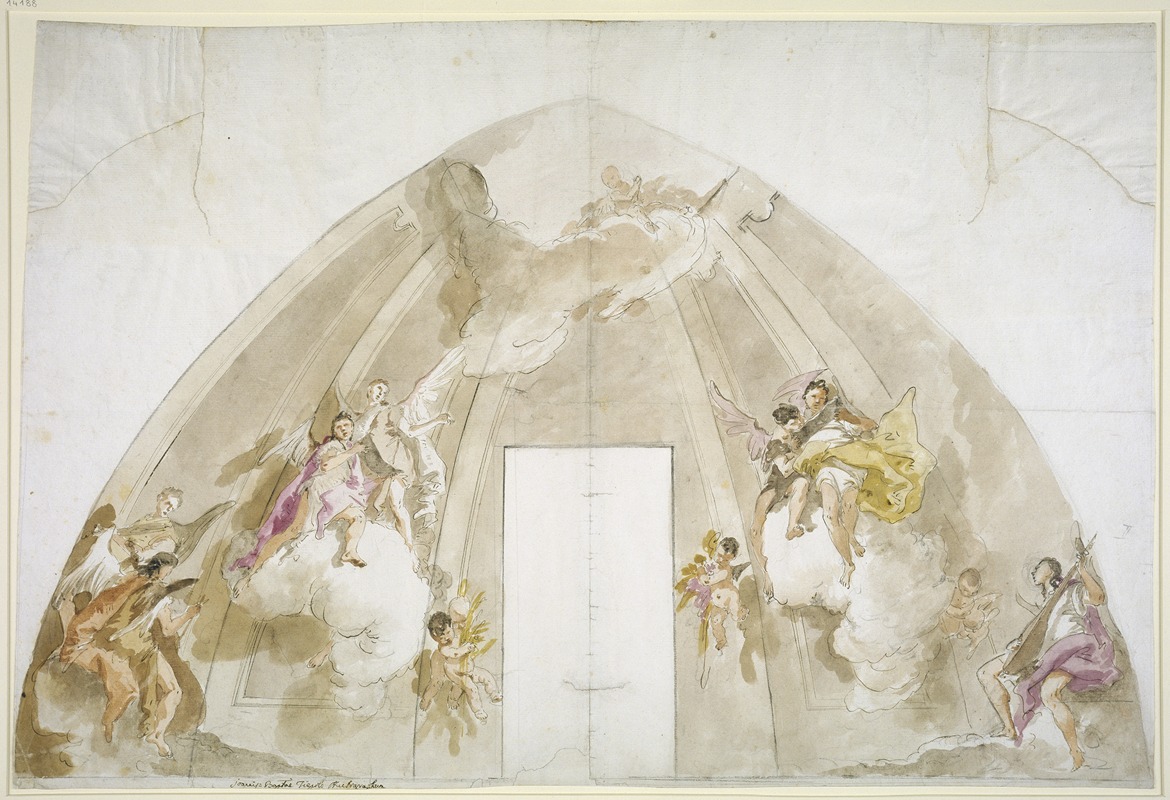
Singing and Music-Making Angels; Preparatory drawing for the ceiling of Udine Cathedral
A hand-painted replica of Giovanni Battista Tiepolo’s masterpiece Singing and Music-Making Angels; Preparatory drawing for the ceiling of Udine Cathedral, meticulously crafted by professional artists to capture the true essence of the original. Each piece is created with museum-quality canvas and rare mineral pigments, carefully painted by experienced artists with delicate brushstrokes and rich, layered colors to perfectly recreate the texture of the original artwork. Unlike machine-printed reproductions, this hand-painted version brings the painting to life, infused with the artist’s emotions and skill in every stroke. Whether for personal collection or home decoration, it instantly elevates the artistic atmosphere of any space.
Giovanni Battista Tiepolo, an Italian painter and one of the most prominent artists of the 18th century, created the preparatory drawing titled Singing and Music-Making Angels as part of his work for the ceiling fresco of Udine Cathedral. This drawing serves as a study for the larger fresco project, showcasing Tiepolo's mastery in composition, movement, and the depiction of celestial themes. The artwork reflects his ability to convey a sense of divine harmony and spiritual elevation, which were central to the Baroque and Rococo styles of the period.
The drawing depicts a group of angels engaged in singing and playing musical instruments, a common motif in religious art intended to evoke the heavenly realm. Tiepolo's use of dynamic poses and flowing drapery in the figures demonstrates his skill in creating a sense of movement and vitality. These elements would later be translated into the final fresco, which adorned the ceiling of the cathedral in Udine, located in northeastern Italy. The cathedral, formally known as the Cathedral of Santa Maria Annunziata, is a significant religious and cultural landmark in the region.
Tiepolo was commissioned to decorate the cathedral's ceiling in the early 18th century, during a period when his reputation as a fresco painter was rapidly growing. His work in Udine is considered an important phase in his career, as it showcases his ability to integrate architectural space with his artistic vision. The preparatory drawing, like many of Tiepolo's studies, provides insight into his creative process, revealing how he planned the arrangement of figures and the interplay of light and shadow to achieve a dramatic and uplifting effect.
The drawing is executed with precision and attention to detail, characteristic of Tiepolo's preparatory works. It is likely rendered in pen and ink with washes, a technique he often employed to explore the composition and refine the gestures of his figures. While the exact location of this specific drawing may vary depending on its current ownership or exhibition status, many of Tiepolo's preparatory works are held in museum collections or private archives.
Tiepolo's frescoes in Udine Cathedral, including the scenes for which this drawing was a preparatory study, remain a testament to his artistic genius and his contribution to the development of European art. His ability to combine technical skill with imaginative vision solidified his legacy as one of the great masters of the Baroque and Rococo periods.





